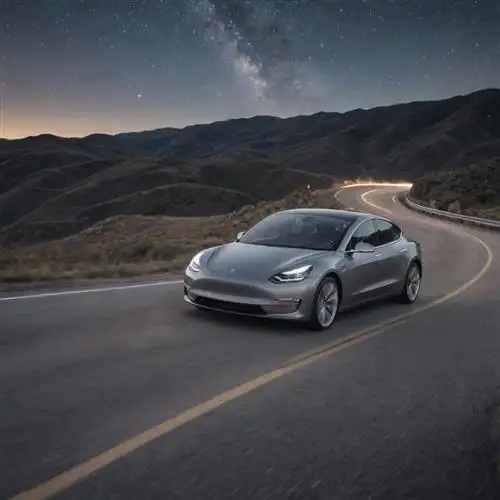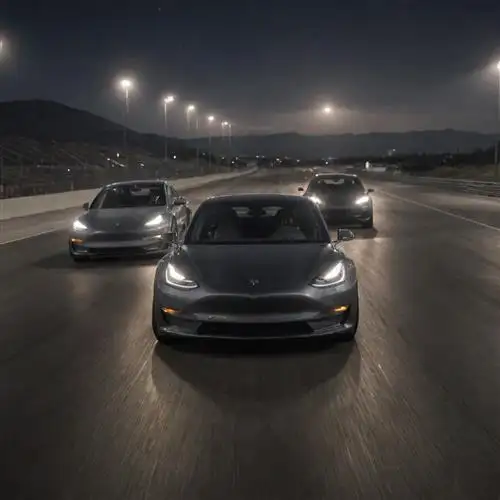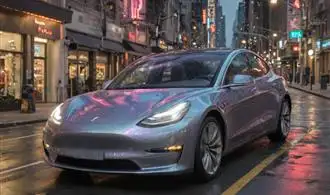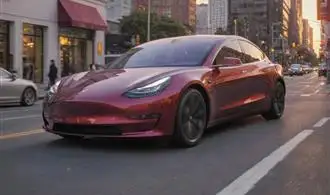
Performance Specifications Comparison
When it comes to the Tesla Model 3, prospective buyers have two main performance options to consider: the Model 3 Performance and the Model 3 Long Range. Both variants offer impressive performance, but the specific details can make a significant difference in which one is the best fit for an individual's needs and preferences.
The Tesla Model 3 Performance is the more powerful and sportier of the two. It boasts a dual-motor all-wheel-drive (AWD) configuration, delivering a combined output of 450 horsepower and 471 lb-ft of torque. This enables the Performance model to accelerate from 0 to 60 mph in just 3.1 seconds, making it one of the quickest production sedans on the market. The top speed is also quite impressive at 162 mph.
In contrast, the Tesla Model 3 Long Range utilizes a dual-motor AWD setup as well, but with a slightly less powerful configuration. It produces 346 horsepower and 389 lb-ft of torque, resulting in a 0 to 60 mph time of 4.2 seconds. While not as blistering as the Performance model, the Long Range's acceleration is still exceptionally rapid, especially when compared to non-electric vehicles. The top speed for the Long Range is 145 mph.
Another key performance difference between the two models is their power delivery and responsiveness. The Model 3 Performance is tuned for a more aggressive, race-inspired driving experience. It features a more immediate and linear acceleration, with a sharper throttle response. This can provide a thrilling and engaging driving dynamic for enthusiasts. The Model 3 Long Range, on the other hand, has a slightly more progressive and linear power delivery, which may be more suited to everyday driving and efficiency-focused owners.
It's worth noting that the Performance model also comes equipped with upgrades such as larger brake calipers, a lower suspension, and stickier tires. These enhancements further enhance the vehicle's handling capabilities and overall track-focused performance. However, these upgrades do come at the expense of a slightly reduced range compared to the Long Range variant.
Driving Range and Efficiency
When it comes to the Tesla Model 3, the driving range and efficiency are two of the most critical factors to consider. The Model 3 is available in two distinct variants: the Performance model and the Long Range model. Each offers a unique balance of performance, range, and efficiency to cater to the diverse needs and preferences of electric vehicle (EV) enthusiasts.
The Tesla Model 3 Long Range boasts an impressive EPA-estimated range of 358 miles on a single charge. This extended range is achieved through a combination of factors, including the vehicle's aerodynamic design, advanced battery technology, and efficient electric powertrain. The Long Range model is an excellent choice for those who prioritize the ability to travel longer distances without the need for frequent charging stops.
In contrast, the Tesla Model 3 Performance model sacrifices some of the Long Range's driving range to deliver a more thrilling driving experience. The Performance variant has an EPA-estimated range of 315 miles, a reduction of 43 miles compared to the Long Range model. This trade-off is a result of the Performance model's increased power output and enhanced performance capabilities, which require more energy consumption.
It's important to note that the real-world driving range may vary depending on various factors, such as driving conditions, driving style, weather, and the use of energy-consuming features like climate control and infotainment systems. However, both the Long Range and Performance models of the Tesla Model 3 are known for their exceptional efficiency, delivering class-leading energy consumption and cost-effective operation compared to traditional internal combustion engine vehicles.
When it comes to efficiency, the Tesla Model 3 shines. The Long Range model boasts an impressive EPA-estimated energy consumption of 24 kWh per 100 miles, while the Performance model has a slightly higher energy consumption of 26 kWh per 100 miles. This translates to significant cost savings on fuel, as electricity is generally much cheaper than gasoline or diesel.
Moreover, the Tesla Model 3's regenerative braking system further enhances its efficiency by recovering energy during deceleration and braking, which is then stored in the battery and used to power the vehicle. This feature not only improves the overall energy efficiency but also extends the vehicle's range by reducing the need for traditional braking, which can deplete the battery.
Acceleration and Braking Performance
The Tesla Model 3 comes in two distinct performance variants: the Long Range and the Performance. The key difference between these two lies in their acceleration and braking capabilities. The Model 3 Performance boasts impressive stats, capable of sprinting from 0 to 60 mph in just 3.1 seconds, while the Long Range model achieves the same feat in a still-swift 4.2 seconds. This difference in acceleration is primarily due to the Performance model's dual-motor all-wheel-drive system, which produces a combined 450 horsepower and 471 lb-ft of torque, compared to the Long Range's 346 horsepower and 389 lb-ft.
The braking performance of the two variants is also noticeably different. The Performance model comes equipped with larger, high-performance brakes that provide superior stopping power and fade resistance. Independent testing has demonstrated that the Performance can come to a complete stop from 60 mph in just 111 feet, a significant improvement over the Long Range's 126-foot stopping distance. This enhanced braking capability is particularly beneficial when driving at higher speeds or in demanding situations, offering the driver greater control and confidence.
It's worth noting that the Performance model's acceleration and braking advantages come at the cost of slightly reduced range. While the Long Range variant can travel up to 322 miles on a single charge, the Performance model's range is capped at 299 miles. However, for many enthusiasts, the thrilling driving experience and improved performance of the Performance model may outweigh the slight reduction in range.
Handling and Ride Quality
When comparing the Tesla Model 3 Performance and Long Range variants, the handling and ride quality are crucial considerations. The Performance model boasts a more dynamic and engaging driving experience, thanks to its sportier suspension tuning and wider, stickier tires. This setup provides a more responsive and composed feel through tight corners, with less body roll and a more direct steering response. The trade-off is a slightly firmer ride quality, which some may find less comfortable for everyday driving, especially on less than perfect road surfaces.
In contrast, the Long Range model prioritizes a more comfortable and compliant ride, with a suspension that soaks up bumps and imperfections more effectively. This makes the Long Range variant a better choice for those who value a smooth, relaxed driving experience, particularly on longer road trips. The trade-off is slightly less agility and responsiveness when pushing the car hard through twisty roads.
It's worth noting that both models benefit from the inherent advantages of the Tesla's low center of gravity, thanks to the battery pack's placement in the floor. This, combined with the instant torque delivery from the electric motors, results in a sense of poise and stability that is often lacking in traditional internal combustion engine vehicles.
Pricing and Value Proposition
When it comes to the Tesla Model 3, the pricing and value proposition are crucial factors to consider. The Tesla Model 3 is available in two primary configurations: Performance and Long Range. The Performance model starts at $54,990, while the Long Range model has a starting price of $49,990. However, it's important to note that these prices are before any available incentives or tax credits, which can significantly impact the final cost.
The Performance model offers a more powerful and thrilling driving experience, with a 0-60 mph time of 3.1 seconds and a top speed of 162 mph. This model also comes with a dual-motor all-wheel-drive system, which provides superior traction and handling. On the other hand, the Long Range model sacrifices some performance for a longer driving range, with a 0-60 mph time of 4.2 seconds and a top speed of 145 mph. The Long Range model boasts an EPA-estimated range of 358 miles, compared to the Performance model's 315 miles.
When considering the value proposition, both models offer impressive features and capabilities that set them apart from traditional internal combustion engine vehicles. The Tesla Model 3 is known for its advanced technology, including a large touchscreen display, over-the-air software updates, and a suite of advanced driver-assistance features. Additionally, the Tesla brand is associated with innovative design, sustainability, and a thrilling driving experience.
















